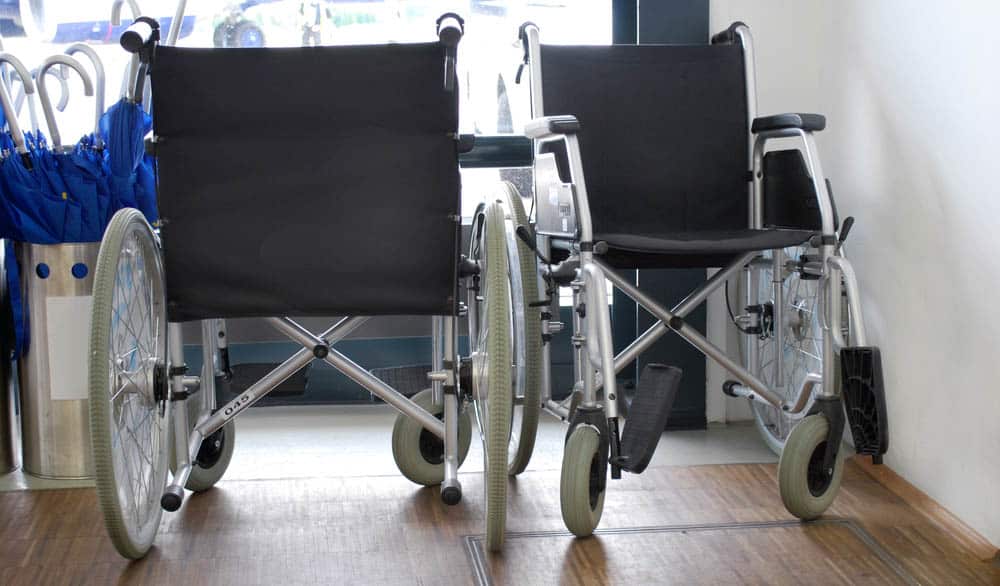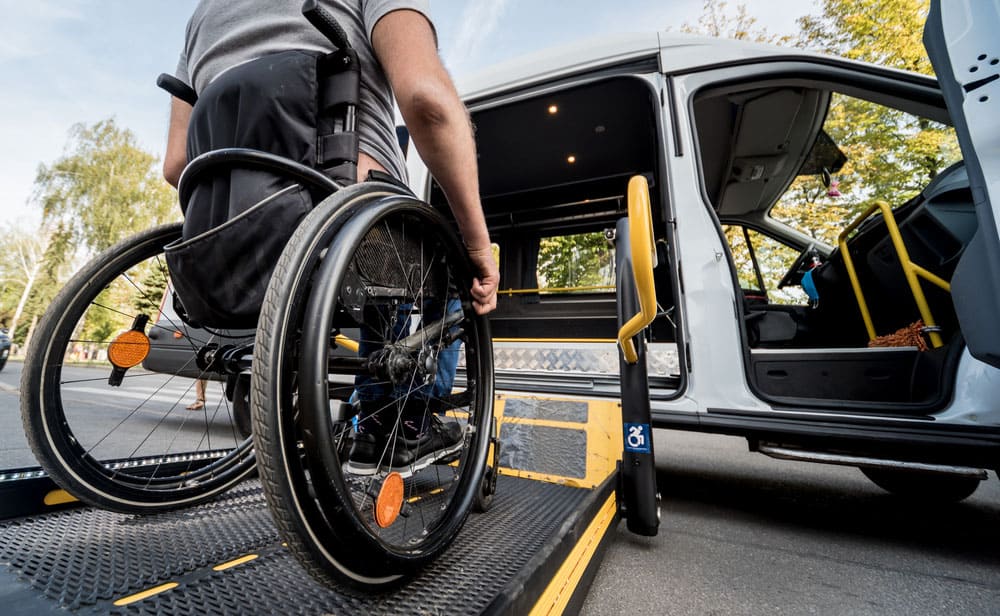Sharing is caring!
An Overview of Wheelchair Transport Methods
Wheelchairs are a great mobility tool for those who need them, but they’re not exactly the easiest to take with you on longer trips. What do you do when you have to travel across town and don’t own a car? Where do you put your electric wheelchair when you need to visit the hospital?
A vehicle wheelchair conversion is a pricey way to accommodate a wheelchair. Others have to resort to using public transportation or or otger wheelchair transport methods. Whichever you choose will depend on certain factors, such as your personal needs and budget.
Here are the pros and cons of each that can help you decide what wheelchair transport methods are right for you.
Factors Affecting Wheelchair Transportation
The kind of wheelchair transport methods that are best for you will depend on your personal situation. Do you live with a caregiver and have someone who can support you? Or do you only use wheelchairs for extended outings?
In addition, it’ll depend on how far away you’re traveling and what kind of accessibility the building has.
Personal Needs
First, you have to consider your individualized needs. People with quadriplegia need wheelchair transport methods that takes into account their disability. They can’t just stand up and stow away their wheelchair if it takes up too much space.
Wheelchair Type
There are a variety of wheelchair options out there that come in different sizes, weights, and turning radiuses. Some fold up for easy transport while others don’t. The type of wheelchair transport methods you use may determine whether or not you can stow it in the trunk of a vehicle or if you need a full van wheelchair conversion.

Accessibility
Even if certain types of wheelchair transport methods have space for it, some vehicles may not have a ramp available for you to enter while in the wheelchair. Many people who use wheelchairs are unable to stand and thus need to stay seated throughout their entire trip.
Methods of Transportation
There are five main types of wheelchair transport methods available for people in wheelchairs. These include personal vehicles, medical taxis, wheelchair van services, public transportation, and ambulances.
The main differentiators between these types are cost and accessibility. Some are more affordable options for occasional trips, while others are the last resort option.
Personal Vehicle
Most people who own wheelchairs opt for using their own personal vehicle to get around. If you have some of your mobility available and a foldable wheelchair, then you can always store the wheelchair in your trunk or backseat during your trip.
However, some wheelchairs don’t fold down or won’t fit in your vehicle. The wheelchair transport methods you will need will require some kind of trunk mount or wheelchair carrier, which takes up extra space and will cost a few hundred dollars.
There’s also the possibility that you need your wheelchair for stability and can’t easily dismount it. In that case, you may need to do a wheelchair van conversion.
A van conversion allows you to open up the inside space and install things like wheelchair ramps or removable seating. The problem is that converting a vehicle can cost you about $30,000 in addition to the cost of the vehicle itself.
Keep in mind that not all vehicles can be converted, which could mean needing to purchase an entirely new vehicle.
Medical Taxi
A medical taxi is a type of transportation that serves as an affordable alternative to an ambulance. If you need to visit the hospital or doctor but don’t have a ride, then a taxi is a good option.
All medical taxis are driven by a medically trained professional. In addition, most of them are covered by insurance and can make multiple stops along a route. They’re especially useful if you need to visit the emergency room but aren’t in a hurry or don’t need specialized care.
The drawback of using medical taxis is that they often aren’t equipped with wheelchair ramps or space for electric wheelchairs. If your wheelchair can’t fold up, then there likely won’t be space for it.
Additionally, you can’t use them for personal travel. They’re specifically designed to help with medical visits.
Wheelchair Van Services
Wheelchair transportation services cater more to wheelchair users than most other available options. These are driven by trained personnel and can be used for both medical wheelchair transport methods and personal trips. Most importantly, they allow a person to stay in their wheelchair for the entire ride.
Some of the benefits include the ability to travel in comfort, gain more independence, and access quality service. If used for medical transport, then insurance can help cover the cost. They can also help patients get back inside their homes if necessary.
The main drawback with these services is that they can cost a lot for multiple trips and must be scheduled in advance.

Public Transportation
Public transportation can be hit or miss, but it’s easily the most affordable travel option. Buses are equipped with ramps and can seat one to two wheelchair users. Trains usually have more space and are easily accessible.
One issue with public transportation is that there’s always a chance that the only wheelchair spots are taken up by other riders. Also, you have to work by their schedule which may not line up with your own.
Ambulance
Ambulatory transportation is one of the first options people choose if they’re seriously injured and need to visit the hospital. They provide the best medical care en route and will get you there the fastest. While they can cost about $1000 per trip, your insurance will usually help cover some of it.
However, non-emergency medical transportation can cost less overall. An ambulance also isn’t meant for medical appointments or to pick up prescriptions.
Wheelchair Transport Made Easier
Like anyone else, wheelchair users should have an easy way to get around and regain some level of independence in their lives. The best wheelchair transport methods allow you to go where you want when you want. If your personal vehicle isn’t up to the job, then there’s always non-emergency medical transportation.
Affinity Transit is a local, family-owned business that provides door-to-door transportation services. We can help with all kinds of transport including wheelchair, stretcher, dialysis, and more. Contact us to learn more or to schedule a trip.

